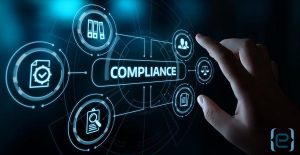Reduce Risk, Increase Productivity and Save Money with Information Governance
Every day, the world produces 2.5 quintillion bytes of data. We send emails and texts, record financial transactions and equipment logs, create spreadsheets and presentations, and much more. By the year 2020, experts suggest, there will be roughly 1.7 megabytes of data created each second for every human on the planet.
While the potential benefits of analyzing that data are limited only by our imagination, the task is daunting. Currently, we use only a tiny fraction of the stored data, ever. Furthermore, the data also represents potential risk and liability for the companies who own it. But with wise information governance, businesses can harness the power of data while reducing the risk.
What is Information Governance?
Simply put, information governance is the umbrella strategy that covers all your organizational data. This includes:
- Categorization and storage of data – Know what data you have and where it resides.
- Data security – Multi-faceted security includes virus protection and threat detection, encryption, policies to guard against improper use of data, and more.
- Regulatory compliance – Data retention policies must ensure compliance with privacy and business mandates such as HIPAA and GDPR.
- Information access controls – Make sure that access to sensitive data is limited to those with a legitimate need for that information.
- eDiscovery – Respond rapidly to requests for information.
Data Explosion
The pace of data creation has grown exponentially in recent years. For instance, in 2002, we recorded and replicated 23 exabytes of information worldwide. By 2011, we generated that much information in just seven days. In addition, the rise in popularity of cloud services means that businesses now store these vast quantities of data in multiple locations.
“The more data, the more storage locations, the bigger the risk to security and compliance,” reports Anita Bhuptani of NetGovern. “Productivity is impacted, as well, as users spend more and more time searching for information.”
In addition, anywhere from 40 to 70 percent of that stored information is either redundant, outdated or trivial (ROT). Consider the hundreds of emails in your mailboxes that are no longer relevant or the multiple versions of a single spreadsheet that cause confusion. Then multiply that by every employee in your organization, past and present.
Once you take control of your data, you reduce risk and build efficiency. You also lay the groundwork to be able to mine data for trends and truly turn information into a productive35 business asset.

Begin with Data Audit and Analysis
The first step in taking control of your data is to conduct a comprehensive data audit. Learn what data you have and where it resides, both on premises and in the cloud. What is in the data? How much of the data is redundant, obsolete or trivial? Are there information policies in place, and are they being enforced?
In addition to an initial data audit, implement software and processes to ensure that you have on-going visibility of your sensitive data moving forward. This will help to ensure compliance with any regulations that apply to your business. It will also reduce eDiscovery costs in the event of litigation.
Organize Data for Efficiency
Once you know where your data lives and what it includes, you can improve efficiency by cleaning up that data. Within regulations, remove or archive information that is redundant or no longer relevant. You will both save on data storage and increase employee productivity.
Make sure that strategic business information is categorized appropriately. This includes business categories such as invoices and customer correspondence. You should also tag information according to its value to the organization and whether it is subject to regulatory requirements.
Archiving solutions allow you to retain data (usually for regulatory compliance) in a format that is easily searchable. At the same time, archiving frees up your primary storage space. A policy-based solution will allow you to specify flexible retention periods, based on the type of information and who produced it.
Proactive Protection
While archiving and eDiscovery allow you to address information once it enters your system, gateway solutions provide proactive protection, allowing you to monitor data as it enters and leaves the organization.
For example, a manufacturing company must protect competitive information. With a comprehensive information governance solution, the company can define policies to monitor outgoing data. If the program finds proprietary or sensitive data, it then quarantines or rejects that information.
Customizable policies act in conjunction with standard security solutions such as antivirus and threat detection to help protect your information assets.

Save Money, Reduce Risk
Implementing a multi-faceted information governance strategy allows you to tap into a myriad of business benefits, including:
- Tangible financial savings from reduced data storage and eDiscovery costs
- Improved regulatory compliance
- Reduced risk of data breaches and mishandling of sensitive data
- Increased employee productivity and collaboration
- Faster access to critical business information
- Ability to harness emerging technologies in business intelligence
Partner for Success
Managing your business data requires significant planning and effort if you are to get the most value out of your information assets. A trusted partner can help you implement a holistic approach to information governance.
eMazzanti’s information experts act as an extension of your team, filling in the gaps with best of class solutions and services. From comprehensive security to business cloud services and customizable information governance solutions, they provide the expertise to reduce liability and unlock the power of your data.













